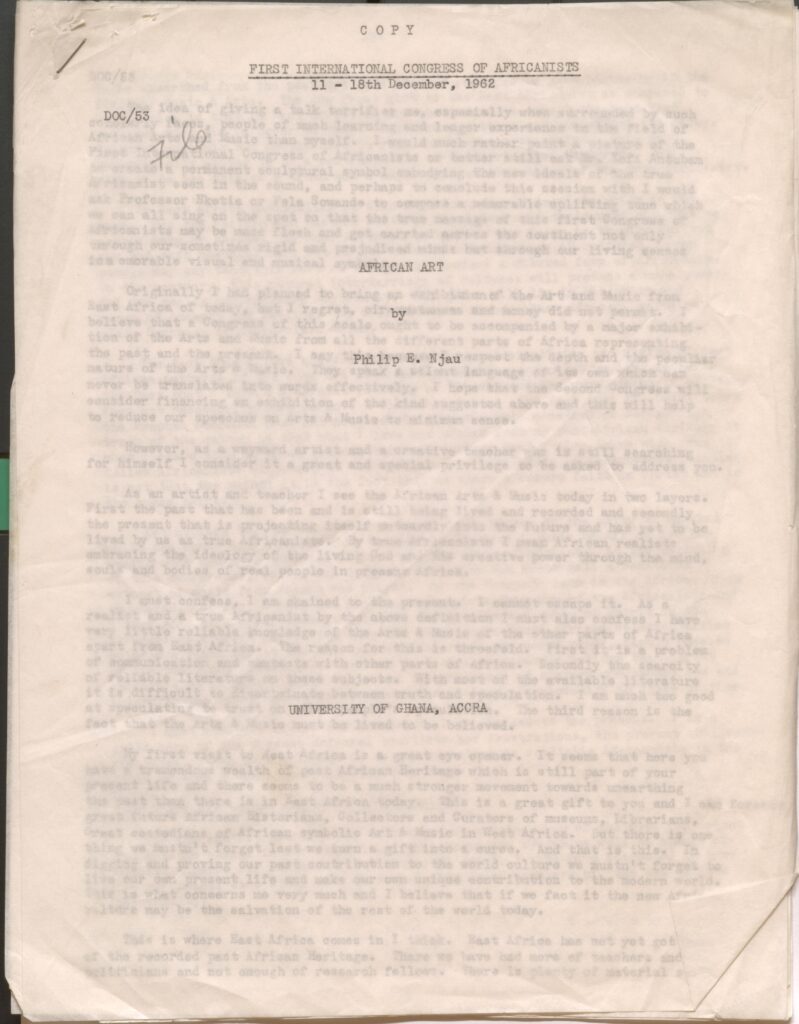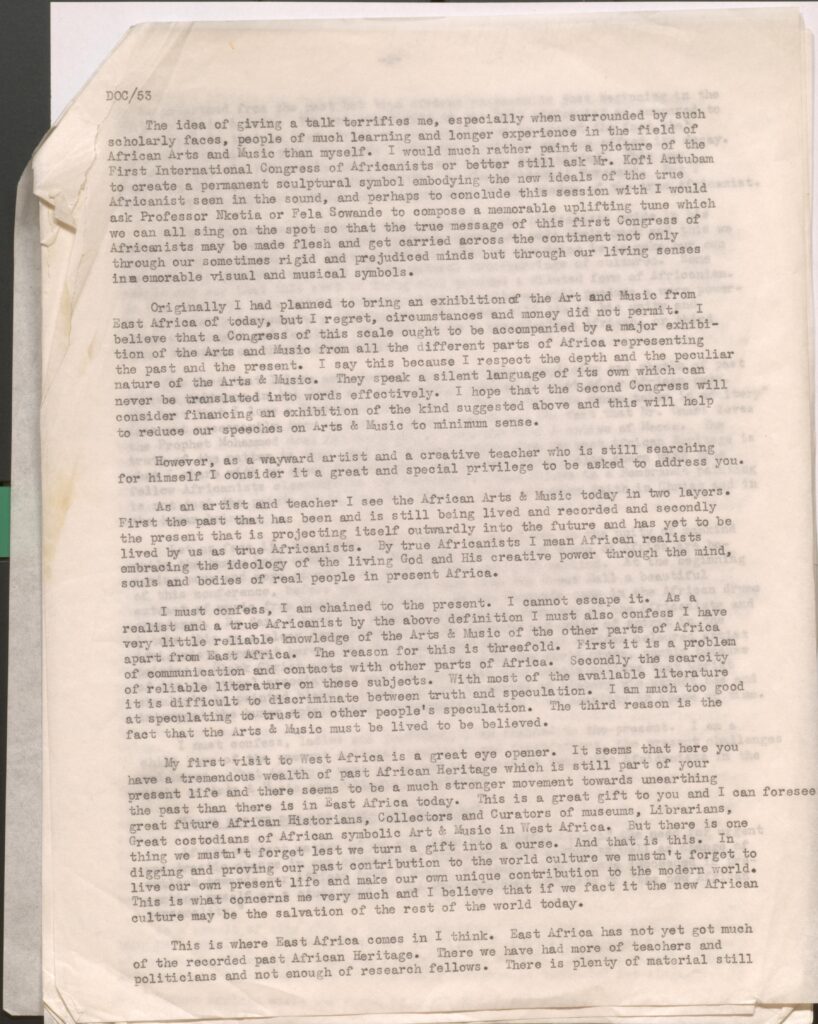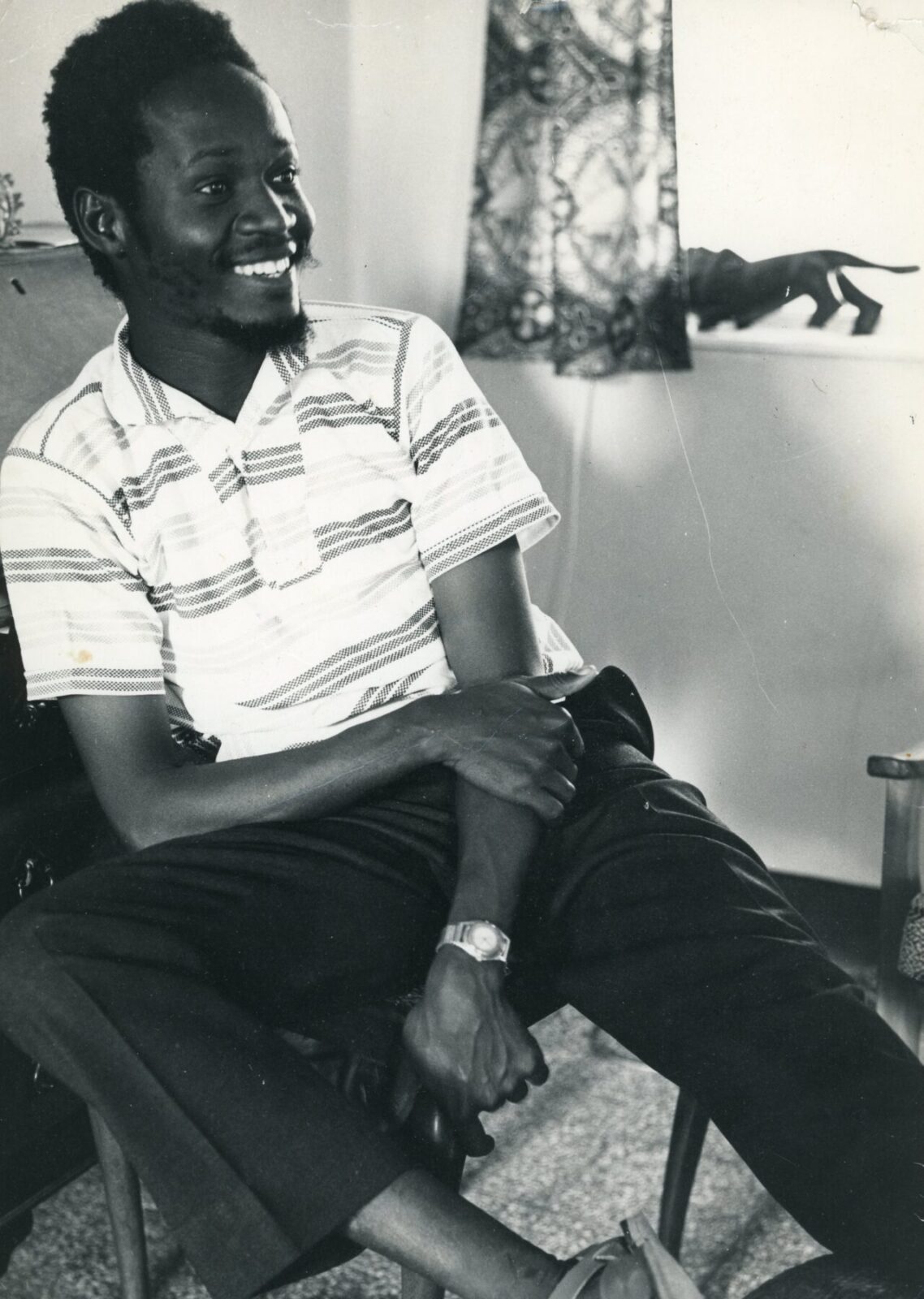
Elimo Njau
Elimo Njau was born in 1932 in Tanzania and studied art at Makerere College. He is a devout Lutheran known for his mural and public commission that depict the Mau Mau victims and biblical scenes.* According to Njau, he does have a “soft spot for artworks that tell the story of Kenya’s liberation struggle and the Bible in the traditional African manner.”
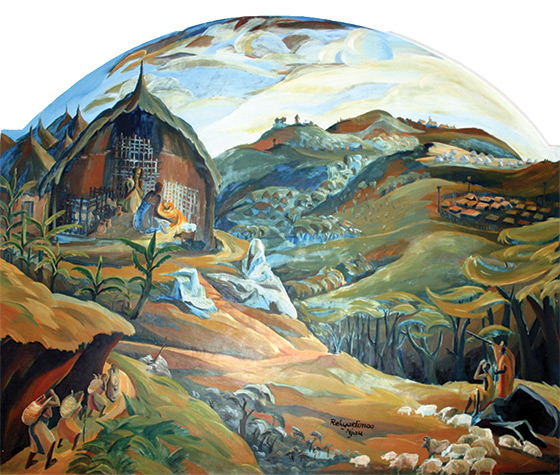
Njau’s depiction of the Bible in the traditional African manner can be seen in his mural at St. James Anglican Cathedral in Murang’a, Kenya. The mural in the cathedral recounts the life of Christ which includes scenes from the last supper and Jesus’ birth. One particular scene, The Nativity, shows a thatched home in a Kikuyu village that is cut in half to reveal a black Mary, Joseph, and Jesus. The other people in the painting are also black. Although this scene is about Jesus’ birth, Njau places that moment to the top left of the mural. Most of the mural depicts the beautiful Kikuyu landscape which includes a British detention camp. The detention camp is most likely a reference to the camps used during the Mau Mau uprising to detain those associated with the Kenya Land and Freedom Army. Njau’s mural expresses his love of Christianity but also his anticolonial sentiments toward the British colonial system for its treatment of those opposed to colonization. Njau knew the dangers of expressing anticolonial ideas seeing how he did not sign his name on the murals until 2006 for fear that they would have been sabotaged by the colonial government.
*The Mau Mau uprisings was a war between the Kenya Land and Freedom Army and the British colonial government in Kenya. The war to end Kenya’s British colonial system lasted from 1952 to 1960 and ended with the defeat of the Kenya Land and Freedom Army.
Head of Christ
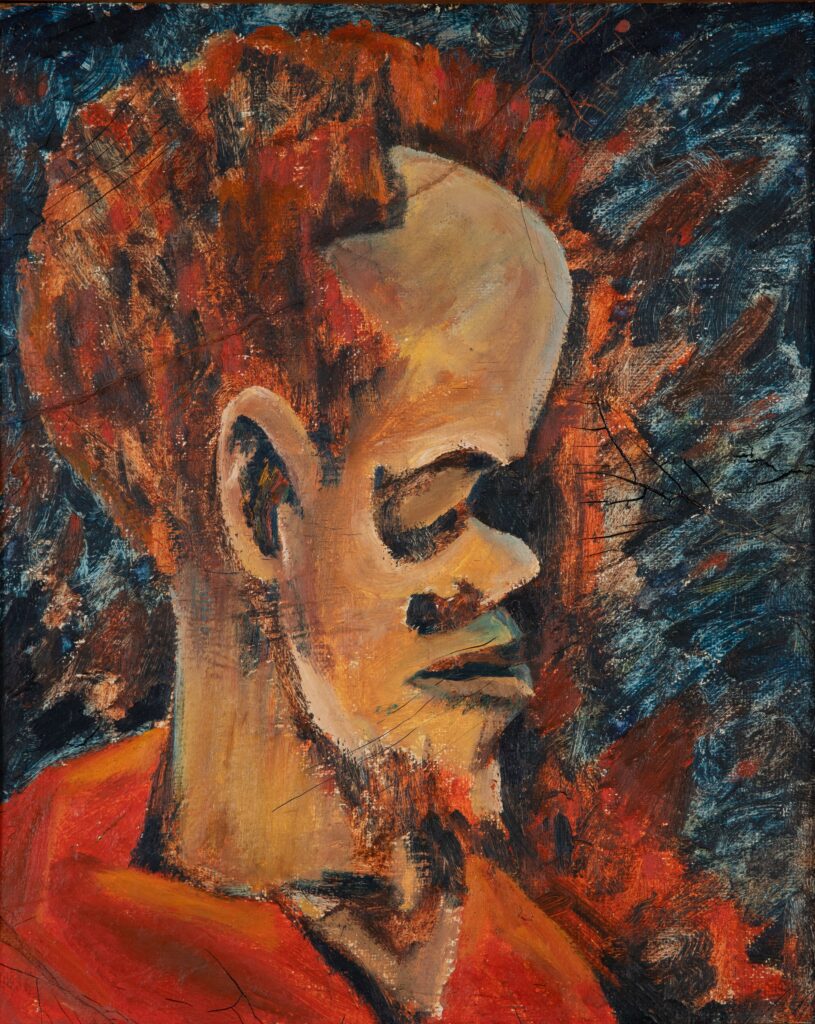
19 ⅞ × 16 ¾ × 1 ⅛ in. Hampton University Museum, Gift of the
Harmon Foundation, 67.117. Photo: Alexander’s Photography.
In the painting, Head of Christ, Njau depicts a black Christ in a red top with fire colored hair and goatee. Behind Christ is a swirling darkness. At certain points the color red, which seems to be coming from Christ himself, is layered on top of the dark background. Is the red coloring blood or is it a protective barrier from the consuming darkness? Although Christ is surrounded by the darkness, he stands unaffected with his eyes closed in prayer.
This painting is reminiscent of the scripture Psalm 23 verse 4, “Yea, though I walk through the valley of the shadow of death, I fear no evil, for you are with me.” Whether Njau had a scripture in mind when creating this piece is unknown but a great deal can be said of the depiction of a stoic black man who is within darkness or the shadow of death. Njau did mix Christian iconography with commentary on the oppressive colonial system as seen through the mural, The Nativity. Head of Christ could be painting a similar message of Kenyan resilience in the face of the oppressive darkness of colonization.
